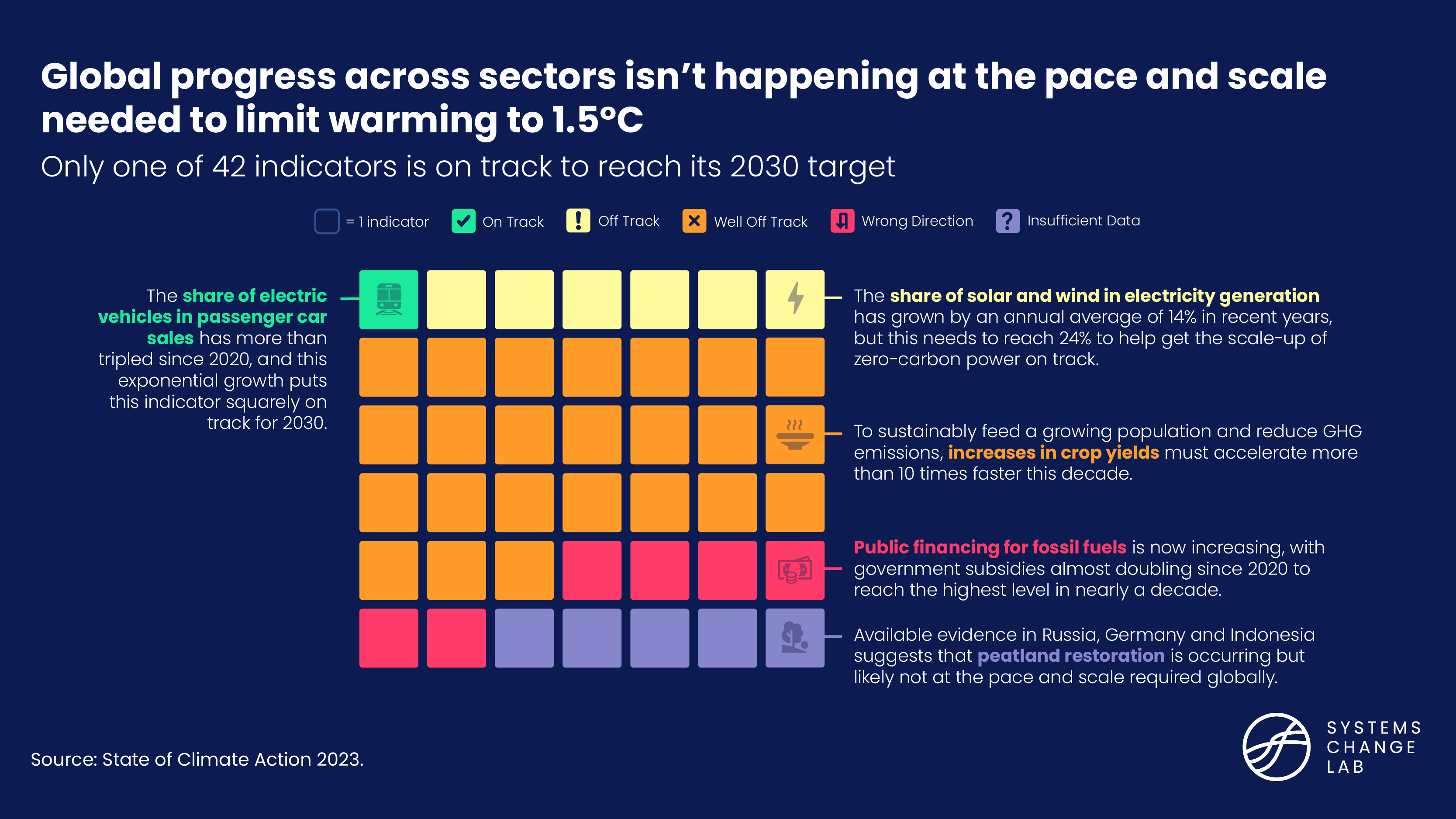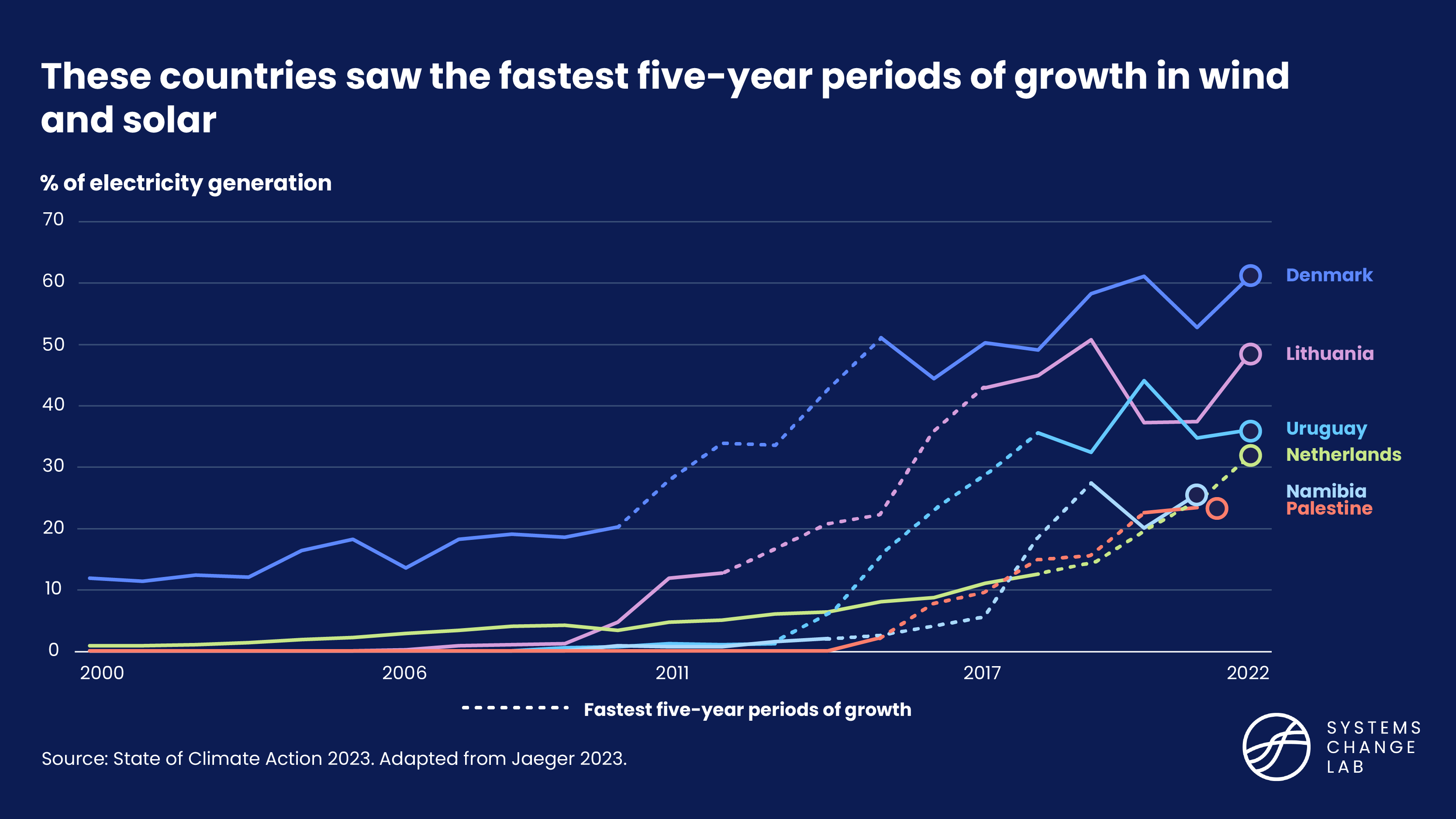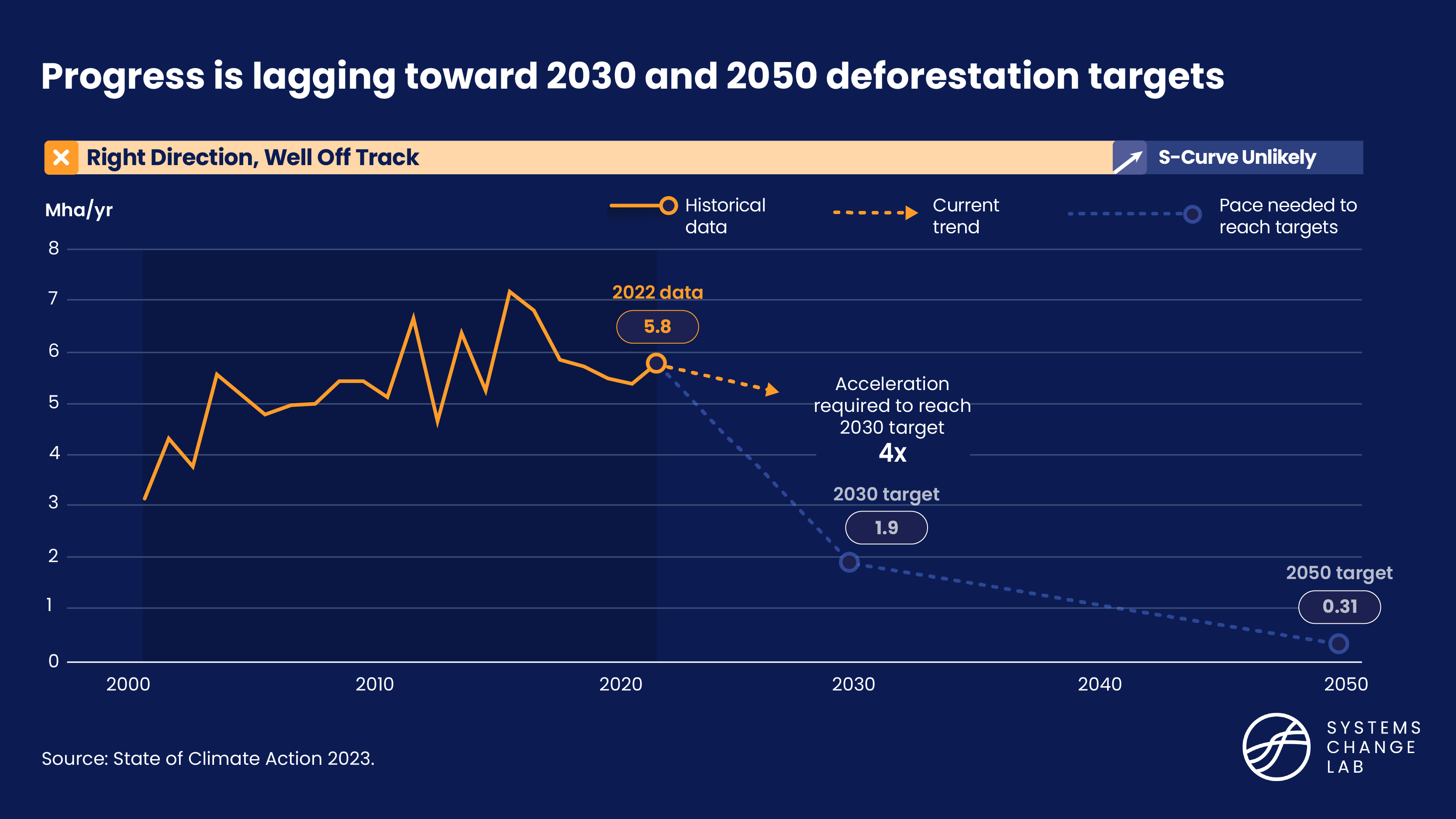By Jeffrey Turrentine
Climate action needs to urgently accelerate this decade in order to keep the Paris Agreement’s 1.5 degrees C (2.7 degrees F) temperature limit within reach, according to climate experts and leaders at a virtual launch for the State of Climate Action 2023 report on November 15.
Systems Change Lab hosted this high-level event on the current state of climate action to discuss where we currently stand in the race to slash greenhouse gas emissions, scale up carbon removal and increase climate finance.
Over the course of 90 minutes, speakers discussed just how far we have come — and just how far we still have to go — toward meeting the climate and sustainability goals that we must reach by the end of this decade. As world leaders prepare to gather in Dubai to address these very issues at COP 28, and as governments respond to findings from the first Global Stocktake, the State of Climate Action 2023 is a highly detailed and comprehensive guide that outlines how to close the global gap in climate action, provides an assessment of global climate progress to date and charts a clear path forward.
“Recent progress isn’t happening at the pace and scale that’s necessary to combat the climate crisis,” said Ani Dasgupta, President & CEO, World Resources Institute, at the opening of the webinar. “Although the findings of the report show that the collective effort to nearly halve GHG emissions this decade — which is the goal, if we're to remain within 1.5 degrees — is falling woefully short, it is possible to reverse this." A special feature of the report, he noted, was the way in which it emphasizes the importance of seeking change "on multiple fronts at the same time, so that progress in one sector can spur gains in others."
The State of Climate Action 2023 monitors the progress of 42 indicators across power, buildings, industry, transport, forests and land, and food and agriculture — sectors that account for roughly 85% of global greenhouse gas (GHG) emissions — as well as technological carbon removal and finance. And while progress has definitely been made, the larger message of the report came through clearly throughout the webinar: We must scale up and speed up.

“Despite decades of dire warnings and wake-up calls, we’re basically lagging behind on nearly every measure,” said co-author and presenter Kelly Levin, Chief of Science, Data and Systems Change, the Bezos Earth Fund. Out of the report’s 42 indicators, only one — the share of electric vehicles in passenger car sales — is currently on track to reach its 1.5 degree C (2.7 degree F) aligned target by 2030. Levin pointed out that, alarmingly, a half-dozen other indicators are so far off-track and headed in the wrong direction that an immediate U-turn is required; among them are reducing the carbon intensity associated with global steel production, protecting mangrove ecosystems and phasing out public financing for fossil fuels.
"Despite decades of dire warnings and wake-up calls, we’re basically lagging behind on nearly every measure."
Between those two extremes, however, there’s data suggesting that the remaining 36 indicators can be oriented toward success, so long as governments and stakeholders are willing to invest the financial and political capital to make it so.
Co-author Judit Hecke of NewClimate Institute presented a thorough analysis of the buildings, industry and transport sectors that highlighted several bright spots, including the aforementioned spike in EV sales as well as recent surges in the installation of energy-efficient electric heat pumps throughout Europe, where some countries have increased their stock by 100 percent in just one year. In these sectors, electrification — with the generated electricity coming from renewable power sources, such as wind and solar — is the key toward decarbonization, and ultimately toward the meeting of nations’ respective Paris targets.
“We can see small examples everywhere that rapid change is possible and they give us hope,” Hecke said. “But this is just not happening fast enough.”
“We can see small examples everywhere that rapid change is possible and they give us hope. But this is just not happening fast enough.”
Speakers underscored the tension between efficacy and urgency, as some of the data they presented reflects positive and significant change while other data clearly indicates the glaring insufficiency of current measures. Co-author Claire Fyson, Co-Head of Climate Analytics' policy team, illustrated this duality with several examples from the power sector. “For the power sector, renewables really stand out as the success story,” she told the audience. “Share of solar and wind, in particular, has shot up — on average, 14 percent per year over the last five years. That’s incredibly fast. But it does need to speed up to 24 percent growth each year to reach our 2030 targets.”

Lead author of the report Sophie Boehm, Research Associate II, World Resouces Institute, echoed such sentiments, explaining how indicators denoting the relative health of forests, peatlands and mangrove swamps — heroes of biodiversity and carbon storage, and the systematic degradation of which accounted for nearly one-fifth of global greenhouse gas emissions in 2021 — can be read as somewhat positive or definitely negative, depending on where you look.
For example, Gabon has bucked worldwide deforestation trends and lost only 1.2 percent of its primary forests over the past two decades, “thanks in part to a portfolio of supportive policies that have expanded protected areas, mandated more sustainable logging practices, and focused on improving traceability across supply chains,” Boehm said. And by replacing Jair Bolsonaro with a new president last year, voters in Brazil also traded Amazonian degradation for Amazonian recovery: deforestation in Brazil fell by 30 percent during the first six months of Luiz Inácio Lula da Silva’s taking office in January, according to preliminary satellite data from Brazil’s national space agency.
Even so, globally speaking, efforts are falling well short of what’s needed. After slowing consistently for two decades, mangrove losses are now ticking back up. If we’re to get things on the right track, Boehm noted, “we’ll need to restore 100 million hectares of forests, 15 million hectares of degraded peatlands, and 240 thousand hectares of mangroves by 2030.”

What’s more, climate finance — a vital enabler of climate action — is currently not up to par with the levels needed to achieve the pace and scale of changes needed by 2030. Financial flows from public and private sources must increase by nearly half a trillion each year through this decade to get on track. Leaders of wealthy countries must begin to take seriously their obligation to make good on unrealized pledges to climate-vulnerable developing nations; the degree of that seriousness will ultimately be determined in Dubai in December. At COP28, leaders will continue the long-simmering debate over what constitutes equitable recompense for the climate damage incurred by their less-wealthy, low-emitting neighbors.
Carlos Manuel Rodríguez, President and Chairperson of the Global Environment Facility, underscored the central role of financing and investment in our climate future. He noted that many major economies currently have plans to double their investments in oil and gas production even as they call for increases in funding for mitigation and adaptation. “That is a paradox; that is an irony; that is a high contradiction,” he said. “There is not a single country in the world — global north or global south — that invests more in protecting nature than it spends on activities that destroy it. And this definitely has to change.”
"There is not a single country in the world that invests more in protecting nature than it spends on activities that destroy it. And this definitely has to change."
Our current situation was summed up succinctly by Helen Mountford, President and CEO, ClimateWorks Foundation: “The reality is that we actually have two truths at the moment. One, we see that we are really off track, far short of what we need on climate action. But the other is that we are seeing in a lot of sectors and geographies truly spectacular progress that’s been surpassing what even the optimists and experts thought was possible.”
To put it another way: It’s entirely possible to look at all of the indicators and decide that the climate-action glass is half-empty. But to limit warming to 1.5 degrees C (2.7 degrees F) and avoid increasingly dangerous and irreversible climate impacts, we need to see the glass as half-full—by identifying not just what we’re doing wrong, but also what we’re doing right. And then we need to do more of it.